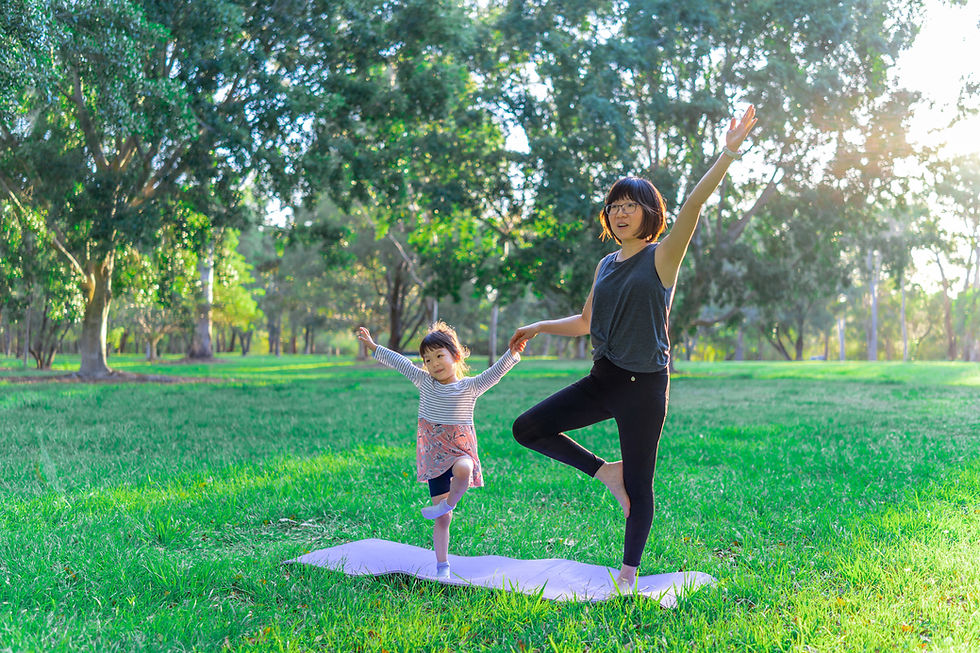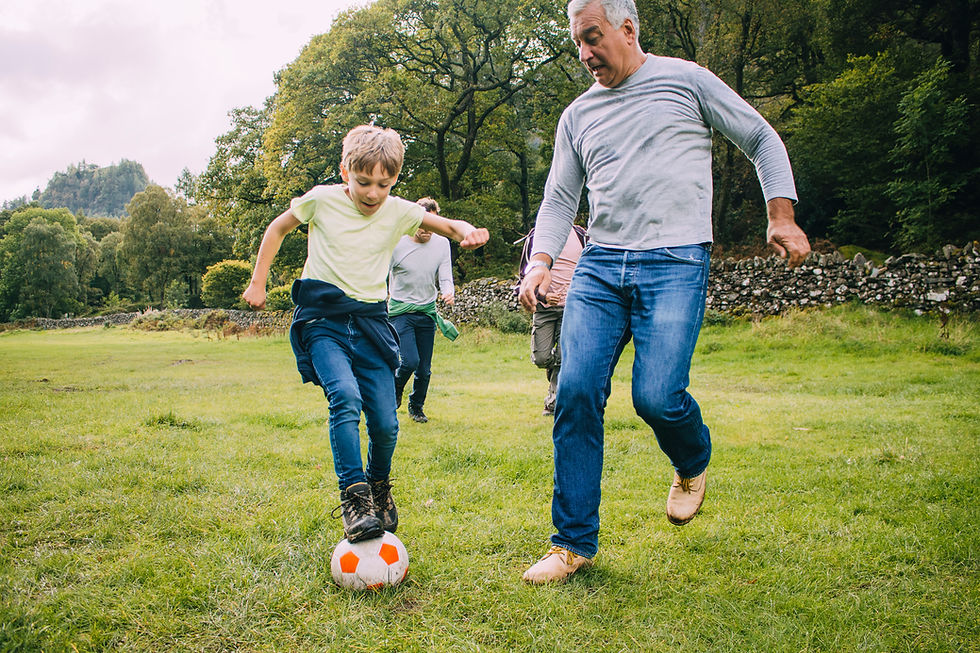Balance 101
- Ashley Stanley
- Jun 21, 2022
- 2 min read
Balance exercises are probably the most simple in design, when compared to strengthening and stretching exercises. Not the most simple to prescribe, but there are only a few variables to manage and there is a stepwise method to progress them.
I am probably offending balance researchers everywhere by calling this simple!
The variables:
Vision. Somatosensation. Vestibular. Base of support and surface.

In PT we modify the variables that contribute to balance to help people strengthen different aspects of the balance system.
How does it work
Balance requires 3 systems to work together: vision, vestibular, and somatosensation. More simply, your eyes, ears, and feet. If you don't have good vision, your body relies on the others. If your ears or vestibular system isn't working well, your body relies on the others. If you can't feel your feet or you have an amputation or other sensory loss (like with spinal cord injury), your knees/hips/hands/elbows/shoulders are the back up, as well as vision and vestibular system.
In PT, we see problems in one system at a time or sometimes all three. This makes balancing difficult and can lead to falls, fear of doing activities, and problems working or doing fun hobbies.
If vision is the problem
To improve balance when vision is the problem, you train the other systems to work better. To strengthen the other systems you practice standing with your eyes closed. Determining where to start requires the skills of a physical therapist. Normally, starting with feet apart and slowing moving them closer together with your eyes closed will strengthen the somatosensory system. To strengthen the vestibular system, add small head movements to various directions and change the surface you are standing on.
If vestibular is the problem
We take two strategies when the vestibular (inner ear) system is the problem. We aim to improve the system and strengthen the other two systems at the same time. Usually we focus on the feet and the eyes first to give you safety when targeting the vestibular system. Start with eyes open, feet apart. Gradually move the feet closer and close the eyes. Then move to an uneven surface (like an airex pad) and repeat. Add head turns to increase the challenge to the vestibular system.
If somatosensation is the problem
Again, we take two strategies. Focus on improving the impaired system and strengthening the other two. Start with eyes open on firm ground. Slowly move your feet together. Practice the exercise with your eyes closed. Then add an uneven surface (like the airex pad) with feet apart. This is where it may get too challenging and you need to start slower.
Progressing these exercises is week by week and takes 4-8 weeks. For example, week 1 with feet apart, week 2 with feet 2" apart, week 3 with feet together. Usually our balance system responds quickly and you will know if the exercises are making a difference within a week or two. Balance exercises are inherently designed to challenge our balance. Always do them in a safe place, next to a wall or counter.
Balance issues are a big safety concern. Do not start on your own unless a PT has prescribed them to you. It is best to reach out to a PT to help determine where to start.
Ashley Stanley PT, DPT
.png)



Comments